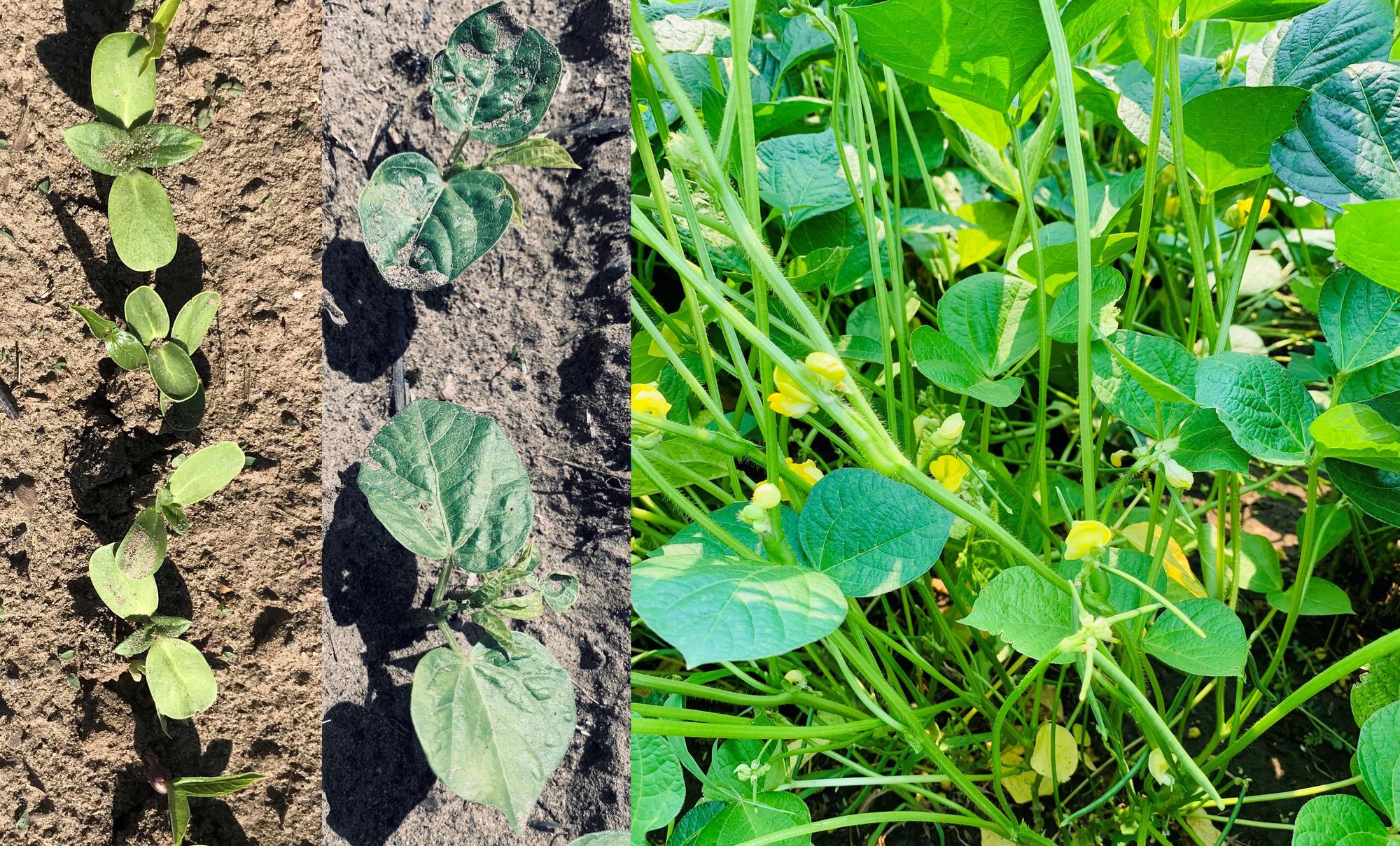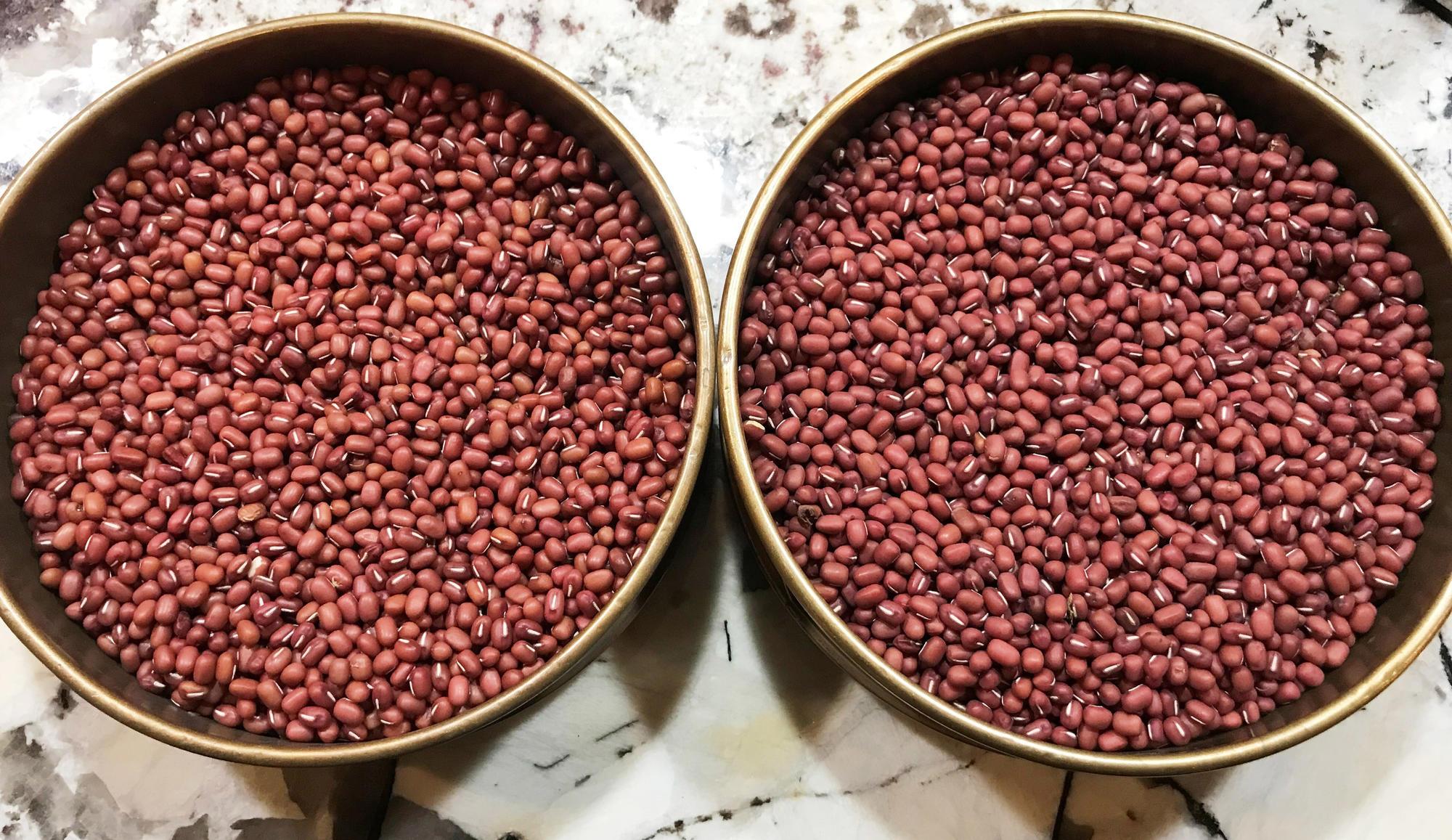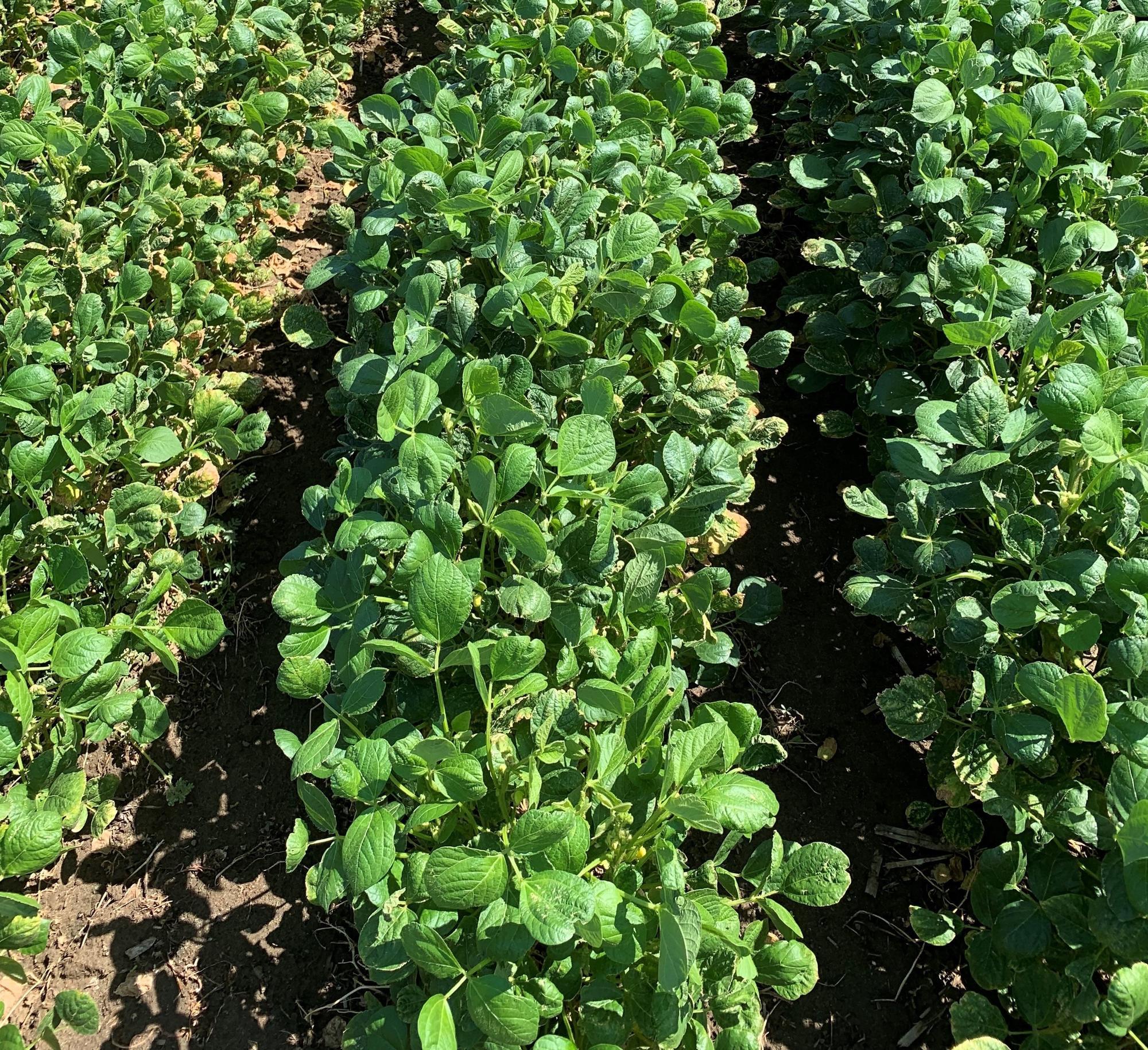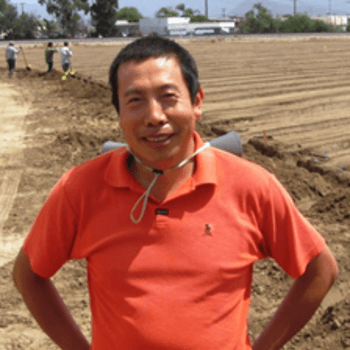Adzuki bean (Vigna angularis) originated in Asia, where it has been cultivated and used for many centuries. Adzuki bean has become the sixth-largest crop in Japan. It has great potential as a source of pharmaceuticals or functional food materials. For over thousands of years, adzuki bean has been used in traditional Chinese medicine and foods.
The adzuki bean plant grows about 12–30 inches tall and produces pods, each containing three to 10 primarily dark red seeds with a white ridge on the side.
Use of adzuki
Adzuki is a good source of essential fatty acids, fiber, minerals and phytochemicals such as polyphenols and phytates. It is a nutritionally beneficial food and a good energy source, although it contains less protein and fewer macronutrients than soybean.
A main use of adzuki bean in eastern Asia is as a confection or sweet bean paste. Adzuki bean paste is used as a filling in pastries and a topping for desserts, especially ice cream. Adzuki beans could be cooked and added to sweet soups or rice, used as a flour or eaten as candied beans. The beans taste similar to kidney beans and can substitute for kidney beans in recipes.
Pureed beans are usually consumed as a vegetable or used as an ingredient in baked foods. Adzuki bean flour is mixed with wheat flour to make noodles. Beans also may be popped like popcorn, used as a beverage base, or used as a coffee substitute. In the United States, people often consume sprouts of germinated seeds. In China, adzuki bean sprouts are consumed as food and herbal medicine. Sprouts from adzuki beans are particularly nutty and tasty. Therefore, adzuki bean could be consumed directly as food, with little processing.
Adzuki characteristics
Current studies have shown that adzuki beans grown in the temperate climates of North America are of high quality.
Because adzuki beans have a hard seed coat, emergence takes longer than other beans. Plants can be susceptible to emergence problems on crusted soils. Seeds germinate by epicotyl growth, leaving the cotyledons below the soil surface. Plants generally mature 110–120 days after planting. Although soil moisture should be maintained at a consistent level, adzuki is fairly drought resistant.
Optimal conditions for growth
Ideal soil germination temperature for adzuki beans is similar to other beans at 59°F. Optimum plant growth is between 64–73°F. Minimum and maximum temperatures for growth are 50°F and 90°F, respectively. Adzuki beans are susceptible to low temperatures and frost like other beans. Low temperatures at planting increase the risk of slow emergence and damage from herbicide injury, soil crusting and root rot.
Adzuki are slow to emerge, especially if the soils are cool (less than 50°F). Check with the seed distributor for variety-specific planting recommendations before planting.
When determining the planting date, consider temperatures at flowering. For optimum growth and development, a day length of 12–14 hours is required.
Agronomic practices
A well-prepared seedbed will provide good soil-to-seed contact, which aids in germination. Beans respond well to good soil structure and grow best on loamy, uncompacted soils. They have relatively inefficient and poorly developed root systems; however, adzuki beans have a stronger root system than other bean types and can be grown on a wider range of soil types.
Adzuki planted 1–1.5 inches deep should begin to emerge within seven days of sowing in mid-May and June. Adzuki planted earlier may take up to 14 days to emerge because of the lower soil temperature. Adzuki bean planted between late April and June have yielded well in the Columbia Basin of Oregon.
Average desired plant stand for adzuki beans is 85,000–90,000 plants/acre. Growers should calculate rates based on their seed lot because seed size and germination rate are different. Reduce seeding rates by up to 10% in conditions where reduced emergence is possible. High-risk conditions include seeding into heavy soil, late or very early planting, deeper plantings and planting into soils susceptible to soil crusting.
Adzuki beans can be planted or sown in rows of less than 30 cm (12-inch) spacing when the bean crop will be direct harvested. Narrower rows produce taller plants (making harvest easier) with higher yield potential. In contrast, wider rows 70–75 cm (28–30 inches) allow inter-row cultivation and may decrease Sclerotinia disease pressure. Wider rows may also help improve pesticide penetration through the canopy. Space plants in the row 2.5–7.5 cm (1–3 inches) apart. For uniform emergence, seeding depth for adzuki beans is critical. Planting depth should be 3–5 cm (1.18–2 inches). Rolling and press wheels can help to conserve moisture and level the ground.
Crop rotation
To avoid the build-up of diseases, rotate crops so that beans are grown only once in three years (or longer). Adzuki bean can be an alternative high-value crop that growers rotate with wheat, corn and soybean.
Nutrient requirements
Nitrogen
Although adzuki beans are legumes, they obtain less than half their nitrogen requirement through nitrogen fixation. Pre-plant nitrogen should be applied between 18–36 kg N/ha (40–80 lb N/acre). Consider cropping history, soil organic matter levels and manure application history in making a decision on applying additional nitrogen fertilizer. Research trials have shown no yield or quality advantages from N fertilizer application when inoculum strain (B. japonicum) is used. However, some nitrogen is necessary to ensure good nodulation even though adzukis are legumes that have the ability to fix nitrogen if proper inoculation has been applied to seed prior to planting. Legumes require neutral to alkaline soil for maximum N fixation by nodule bacteria. Soils with pH 5.8–6.4 have been used for adzuki production with few problems. Test soil and add lime if its pH is less than 5.5.
Phosphorus, potassium and sulfur
Maintenance phosphorus and potassium requirements are similar to those of other edible beans. Apply fertilizer equivalent to crop nutrient removal annually in order to maintain adequate soil test levels. Soils low in P will typically require almost 62 lbs/acre of P2O5. To avoid fertilizer burn and possible detrimental effects on Rhizobium, high P rates should be split. For soils low in sulfur, apply a fertilizer containing 18 lbs/ac of sulfur. Gypsum is a good source of sulfur and can also improve soil structural problems. Add potassium at a rate of 32 lbs/ac K2O. It should be noted that no fertilizer should be placed in direct contact with seeds.
Micronutrients
Manganese, zinc, boron and molybdenum are the most important micronutrients that should be provided for adzuki bean. Foliar fertilization is effective for correcting micronutrient deficiencies. Manganese sulfate (0.9–1.8 lbs/ac), zinc sulfate (0.22–0.9 lbs/ac) and borax (0.22–2.7 lbs/ac) are suitable source of these micronutrients as a foliar application.
Varieties of adzuki
Before choosing adzuki bean variety, carefully consider these factors: growth habit, days to maturity, yield potential, and disease resistance or tolerance. ‘Erimo’ is the main variety grown in Hokkaido, North America and Australia; Japanese consumers prefer it for bean paste. Two new Japanese varieties, ‘Kita-no-otome’ and ‘Shumari’ have been released in the last 10 years, offering improved disease resistance over ‘Erimo’ but no yield benefits. ‘Takara’, which was brought from Japan in 1978, is the most widely grown variety in the Upper Midwest. The variety ‘Minoka’, a large-seeded adzuki bean, was released by the Minnesota Agricultural Experiment Station in 1980 but has not been widely grown.
Crop protection
Weed control
Adzuki beans are poor competitors against weeds because of slow early growth, so a combination of chemicals and cultivation is required. Corn and cereals are often favored as a previous crop due to the number of options for controlling problem weeds.
Select fields with relatively light weed pressure to grow adzuki beans. Rotary hoe seven to 10 days after planting to kill the first flush of weeds as they emerge. This should give a sufficient height difference between weeds and the crop to effectively use row cultivation. Delay the first cultivation until the primary leaves are fully developed. Cultivate a second time 10–20 days later, if needed.
A preplant herbicide provides early control of most problem grass weeds and some broadleaf weeds. Trifluralin is the only product registered for pre-emergent use on adzuki beans for both full soil incorporation and direct drill. S-Metolachlor is registered for application post sowing/pre-emergence for milk thistle (Sonchus spp.) control. Imazethapyr can be used pre-emergent or post emergent to control a range of broadleaf and grass weeds. Do not mix Zn foliar fertilizer products with Imazethapyr, as they can dramatically reduce the efficacy of the herbicide.
Diseases and their control
The most common diseases in adzuki bean production fields are bacterial stem, root rot and white mold (Sclerotinia), which is encouraged by short rotations. Soybean, canola, potato and sunflower are poor rotation choices with beans because they are susceptible to white mold. Root rots are challenging to control through rotation, because they have a wide crop-host range. Soil compaction, poor drainage, frequent cropping to beans and other factors that result in plant stress favor root rot. A good rotation program (small grains or corn) and the use of disease-free seed are the best ways to help prevent disease in adzuki beans. Furrow irrigation, while not always practical, is superior to sprinkler irrigation to reduce the spread of diseases from plant to plant.
Insects and their control
A wide range of chewing and sucking insects cause problems in adzuki, reducing yield and quality. Heliothis (Helicoverpa spp.) is often the main pest of adzuki. Insecticides should be used for eggs or newly hatching caterpillars. Mirids are another common pest, resulting in pod abortion and low yields. Thrips and jassids are common problems in the seedling stage.
Harvest and storage
Harvest beans when leaves start to senesce and shed. Stems may be slightly green. Pods on the plant will turn yellow and seeds in the pods feel hard and rattle within the pod. Adzuki beans mature later than some other edible beans. About 118 days is a typical maturity period, depending on the growing season. Mid-September is a typical harvest date for adzuki beans in the Columbia Basin.
Some growers windrow adzukis early in the morning to allow dry down, followed by combining later in the day. Shattering of pods is common. Selection of harvest maturity is also important. Delaying harvest until late in the season will probably increase harvest losses. To avoid splitting beans and damaging the seed, slow cylinder speed and open concave settings. Pods thresh easily to release the seeds.
The ideal moisture range for harvest is 16–20%. Harvesting outside this range reduces seed quality. Low moisture content at harvest increases the amount of split seeds and cracked seed coats. Adzuki beans are quite resistant to weathering, and their hard seed coat resists moisture absorption after maturity.
Seed nutrients
Adzuki beans have many health benefits. They are a good source of folate, protein, fiber, magnesium, potassium, phosphorous, manganese and iron. The cholesterol-free beans have been shown to protect against diabetes, help reduce blood sugar spikes and are easy to digest.
Adzuki beans with 8%–12% moisture are loaded with approximately 3% fiber, 24% protein, 70% complex carbohydrates and 0.5% lipids and beneficial compounds. Adzuki beans contain saponins, polyphenols and antioxidants and provide anti-inflammatory and anti-hypertensive benefits.
References
Hardman, L.L. 1987. Adzuki Bean Cultural Information. University of Minnesota Extension Service, St. Paul, MN.
Lumpkin T.A., J.C. Konovsky, K.J. Larson, D.C. McClary. 1993. Potential new specialty crops from Asia: azuki bean, edamame soybean, and astragalus. In: J. Janick, J.E. Simon (Eds.), New Crops. Wiley, New York, pp. 45–51.
Motley K., D. McCaffery , D. McConnon. 2004. Azuki Beans: Irrigated Planting Guide. NSW Department of Primary Industries.
Sacks F.M. 1977. A literature review of Phaseolus angularis—the adzuki bean. Economic Botany 31: 9–15.
Soltani N., D.E. Robinson, C. Shropshire, P.H. Sikkema. 2006. Adzuki bean (Vigna angularis) responses to post-emergence herbicides. Crop Protection. 25, 613–617.
Varietal Trials of Farm Crops. 1988. Report No. AD-MR-1953, University of Minnesota Agricultural Experiment Station, St. Paul, MN.
Yousif A.M., I.L. Batey, O.R. Larroque, B. Curtin, F. Bekes, H.C. Deeth. 2003. Effect of storage of adzuki bean (Vigna angularis) on starch and protein properties. Lebensmittel-Wissenschaft und Technologie. 36: 601–607.
Yousif A.M., J. Kato, H.C. Deeth. 2007. Effect of storage on the biochemical structure and processing quality of Adzuki bean (Vigna angularis). Food Reviews International. 23: 1–33.
¡Use los pesticidas con seguridad!
- Póngase ropa de protección y equipo de seguridad según las recomendaciones de la etiqueta. Báñese después de cada uso.
- Lea la etiqueta del pesticida—aunque lo haya usado antes. Siga al pie de la letra las indicaciones de la etiqueta (y cualquiera otra indicación que Ud. tenga).
- Tenga precaución al aplicar los pesticidas. Conozca su responsabilidad legal como aplicador de pesticidas. Usted puede ser responsable de heridas o daños resultantes del uso de un pesticida.





